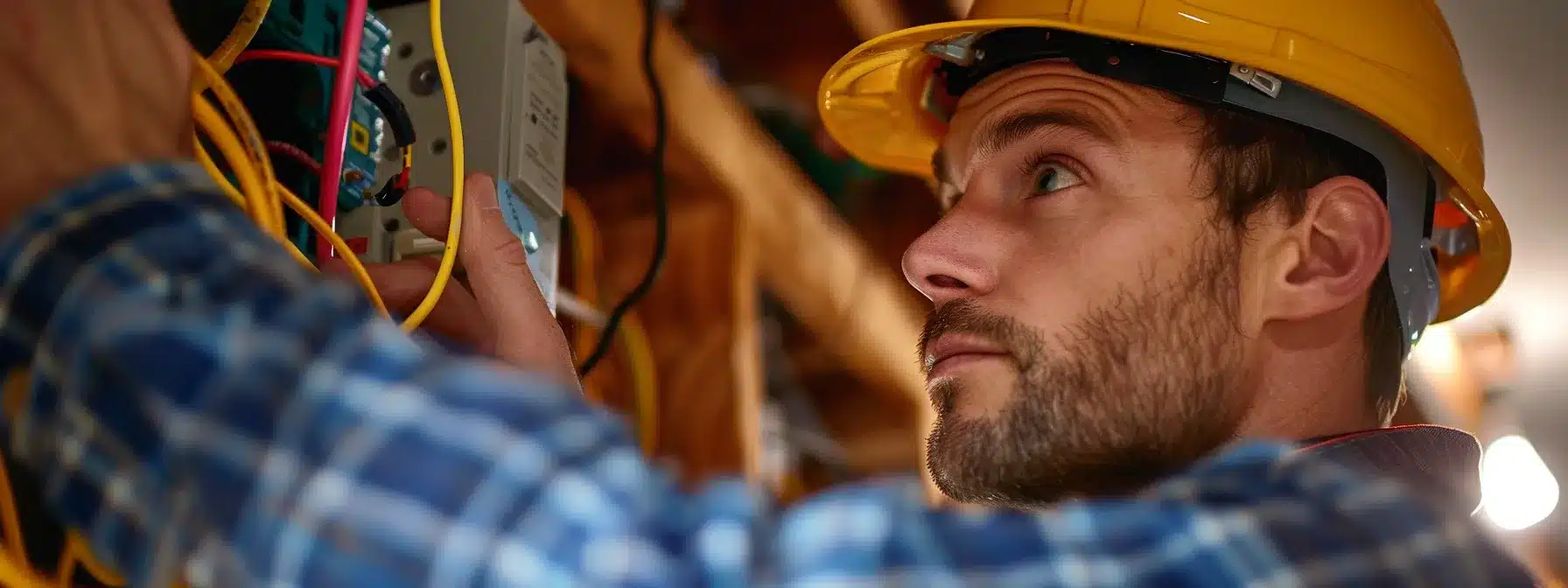Emergency wiring systems serve as a critical lifeline during power outages, ensuring essential electrical functions continue uninterrupted. Regular safety checks by an emergency electrician are vital to maintain the integrity of these systems, protecting against potential electric current issues and power source failures. These inspections also verify the effectiveness of surge protectors, which safeguard equipment and prevent injury during electrical emergencies. In this article, we’ll explore the crucial aspects of emergency wiring safety checks and their impact on building safety and compliance.
Key Takeaways
- Regular inspections of emergency wiring systems are crucial for safety and reliability
- Professional evaluations should be conducted annually, with more frequent checks for high-risk environments
- Routine in-house checkups complement professional inspections and help identify early signs of wear
- Detailed documentation of all inspections and maintenance work is essential for long-term system management
- Neglecting emergency wiring system maintenance can lead to severe legal and financial consequences
Understanding the Importance of Emergency Wiring Safety Inspections
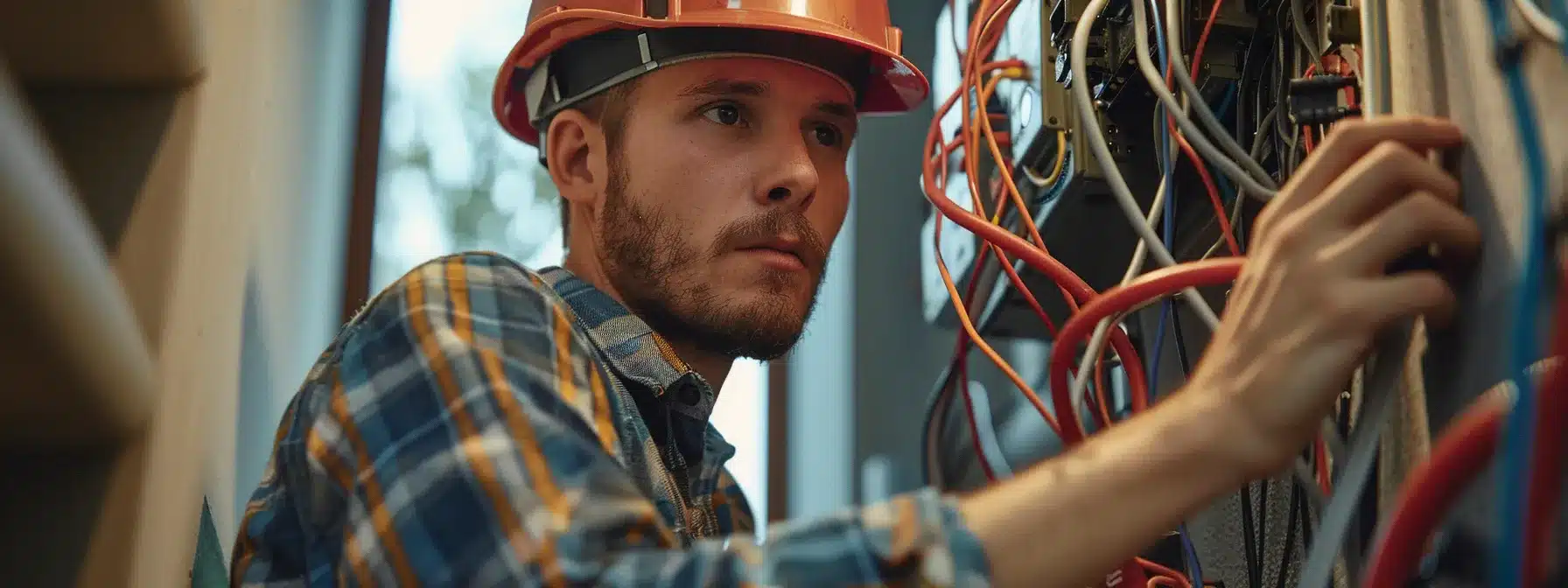
Emergency wiring systems serve as a critical lifeline during crises, demanding meticulous attention to safety. Regular inspections of these systems by emergency electrician are not just a matter of occupational safety and health; they’re essential for protecting lives and property. From construction sites to residential buildings, comprehensive risk assessments help identify potential hazards before they become serious threats. Warning signs of faulty emergency wiring can be subtle, making routine checks invaluable in catching issues early. Proper grounding and system integrity are vital components that skilled electricians evaluate during these crucial safety inspections.
Defining the Scope of Emergency Wiring Systems
Emergency wiring systems encompass a range of electrical components designed to function during critical situations. These systems include backup generators, emergency lighting, fire alarm circuits, and other vital electrical equipment. An electrical safety checklist serves as a crucial tool for ensuring these systems remain operational when needed most.
The scope of emergency wiring extends beyond just power supply, incorporating safety devices like fire extinguishers and their associated electrical connections. Ground fault protection plays a vital role in these systems, safeguarding against electrical shock hazards during emergencies. Regular testing of emergency stop buttons and fault indicators helps prevent system failure when it matters most.
Proper maintenance of emergency wiring systems requires a comprehensive understanding of their components and functions. Electricians must be well-versed in the specific requirements for different types of buildings and occupancies. Here’s a breakdown of common emergency wiring system components:
The Role of Safety Inspections in Emergency Situations
Safety inspections play a crucial role in ensuring emergency wiring systems function properly during critical situations. These checks help identify potential hazards, such as frayed cables or faulty electronic components, that could compromise the system’s effectiveness. Regular inspections also ensure that high voltage equipment remains properly insulated and protected, reducing the risk of electrical fires or shocks during emergencies.
Firefighting efforts rely heavily on functional emergency wiring systems, making safety inspections an essential part of disaster preparedness. Inspectors carefully examine wiring connections, circuit breakers, and backup power sources to guarantee they will operate as intended during a crisis. By addressing potential issues before they escalate, these inspections help maintain the integrity of life-saving systems.
Safety checks also focus on identifying and mitigating hidden hazards within emergency wiring systems. Inspectors assess the condition of cables, looking for signs of wear, damage, or improper installation that could lead to system failure. These thorough examinations help prevent catastrophic breakdowns during emergencies, ensuring that critical electrical systems remain operational when they’re needed most.
How Regular Checks Prevent Electrical Hazards
Regular safety checks on emergency wiring systems play a crucial role in preventing electrical hazards. These inspections allow electricians to identify potential issues before they escalate into dangerous situations. By catching problems early, technicians can address faulty wiring, loose connections, or outdated components that might otherwise lead to short circuits or electrical fires.
Routine inspections help maintain the integrity of emergency electrical systems, ensuring they can handle the necessary current load during critical situations. Technicians test circuit breakers, examine insulation, and verify proper grounding to minimize the risk of electrical shock or equipment failure. These checks also help identify any unauthorized modifications or additions to the system that could compromise its safety.
Regular maintenance reduces the likelihood of machine malfunctions caused by electrical issues. By keeping emergency wiring systems in top condition, businesses and homeowners can avoid costly downtime and potential safety hazards. These proactive measures not only protect property but also safeguard the lives of occupants who rely on these systems during emergencies.
After grasping the critical nature of emergency wiring safety inspections, let’s delve into the nitty-gritty details. Buckle up as we explore the key components our expert electricians scrutinize during these vital checks.
Key Components Inspected During Emergency Wiring Checks

Emergency wiring systems require thorough inspections to ensure their reliability during critical situations. These checks focus on key components that play vital roles in maintaining safety and functionality. From backup power sources that provide essential voltage to electric lights that guide occupants to safety, each element undergoes rigorous testing. Electricians examine alarm systems, verify circuit integrity for direct current flow, and inspect fuses to prevent overloads. These comprehensive electrical inspections encompass various aspects of the emergency system, ensuring it remains ready to perform when needed most.
Inspection of Backup Power Sources
Backup power sources form the backbone of emergency wiring systems, making their inspection crucial. Electricians examine these components meticulously, ensuring they meet the national electrical code standards. They check contactors, which control the flow of electricity to emergency circuits, verifying their functionality and responsiveness.
Inspectors scrutinize the electrical wiring connecting backup generators to critical systems like smoke detectors and emergency lighting. They assess the condition of cables, connections, and insulation to prevent potential failures during emergencies. This thorough examination helps maintain the integrity of the backup power system, ensuring it can provide reliable service when needed most.
Technicians also review the terms of service for backup power equipment, ensuring proper maintenance schedules are followed. They test the automatic transfer switches that engage backup power sources during outages, confirming their ability to respond swiftly and efficiently. Here’s a breakdown of key components inspected in backup power systems:
Testing of Emergency Lighting Systems
Emergency lighting systems undergo rigorous testing during electrical inspections to ensure they function properly during critical situations. Technicians assess battery backup units, verifying their capacity to provide adequate illumination for safe evacuation. They also examine the placement and coverage of emergency lights, ensuring they meet occupancy requirements for various building types.
Inspectors don personal protective equipment while testing these systems to guard against potential arc flash incidents. They check for proper installation of fixtures and verify that no extension cords are used as permanent wiring for emergency lighting. This thorough examination helps maintain the integrity of the emergency lighting system, crucial for guiding occupants to safety during power outages or emergencies.
The testing process includes simulating power failures to confirm automatic activation of emergency lights. Technicians measure illumination levels and duration, ensuring they meet safety standards for different occupancy types. They also inspect mounting brackets and wiring connections, addressing any issues that could compromise the system’s reliability during critical moments.
Examination of Alarm Systems Functionality
Examining alarm systems functionality forms a critical part of emergency wiring inspections. Technicians meticulously check the fire alarm system‘s wiring, ensuring all connections remain secure and free from corrosion. They verify that each component of the system, from smoke detectors to control panels, operates correctly and communicates effectively.
Inspectors test the integrity of alarm system circuits, confirming that wire insulation remains intact and undamaged. They examine the electronics within control panels, looking for signs of wear or potential failure that could compromise fire safety. This thorough evaluation helps maintain the reliability of these crucial life-saving systems.
The examination process includes simulating various emergency scenarios to assess the alarm system’s response. Technicians trigger different types of alarms, verifying that audible and visual alerts function as intended. They also check that the system properly notifies appropriate authorities when activated. Key steps in examining alarm system functionality include:
- Testing smoke and heat detectors for proper activation
- Verifying battery backup systems for control panels
- Checking alarm sounders and strobe lights for adequate coverage
- Inspecting wiring connections for signs of deterioration
- Confirming communication with monitoring stations
Verification of Circuit Integrity for Essential Services
Verifying circuit integrity for essential services forms a crucial part of emergency wiring inspections. Technicians examine cables and electrical conduits, ensuring they remain intact and protected from physical damage. They pay special attention to metal-clad cables, which offer superior protection against fire and mechanical stress.
Inspectors use specialized equipment to test the voltage capacity of emergency circuits, confirming they can handle the required load during critical situations. They check for any signs of overheating or degradation in electrical cables that could compromise the system’s reliability. This thorough examination helps maintain the effectiveness of emergency management systems.
The verification process includes tracing circuits to ensure proper separation between emergency and non-emergency systems. Technicians identify and label critical circuits, facilitating quick response during emergencies. Here’s a breakdown of key aspects examined during circuit integrity checks:
Electricians don’t just check wires; they navigate a complex web of regulations. These legal standards and building codes ensure every connection meets the highest safety benchmarks.
Compliance With Legal Standards and Building Codes
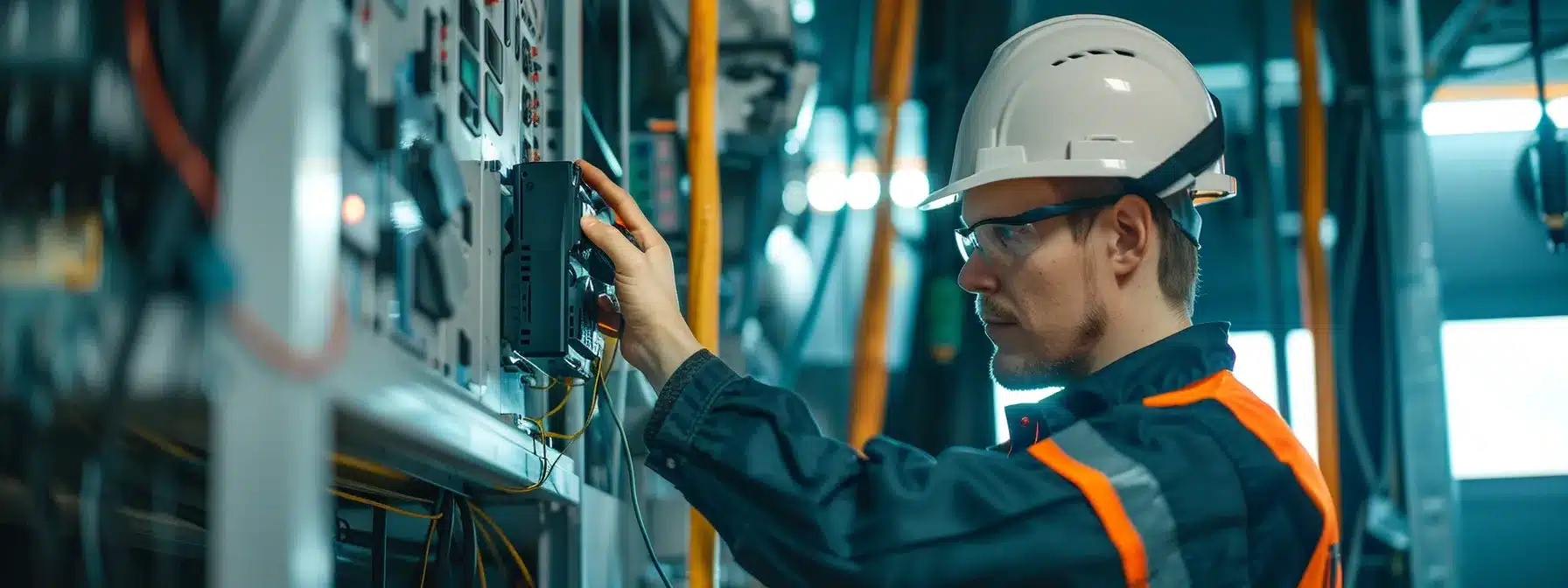
Emergency wiring systems play a vital role in safeguarding lives and property during crises, making compliance with legal standards and building codes essential. These regulations govern the installation, maintenance, and operation of electrical systems that provide crucial electric power during emergencies. From combustion safety measures to efficient use of electrical energy, adherence to these standards ensures public trust in emergency preparedness. Regular safety checks not only verify compliance but also offer opportunities to implement the latest safety tips and update systems to meet evolving regulations. By staying current with code requirements, building owners and managers can maintain robust emergency electrical infrastructure capable of responding effectively to unforeseen events.
Overview of Relevant Electrical Safety Standards
The National Electrical Code (NEC) serves as the foundation for emergency wiring system standards, outlining crucial safety requirements. This comprehensive electrical code addresses overcurrent protection, grounding, and proper installation methods for emergency power systems. Electricians rely on these guidelines to ensure emergency wiring meets stringent safety criteria.
OSHA regulations complement the NEC, focusing on workplace safety aspects of emergency electrical systems. These standards cover proper use of power strips, implementation of lockout/tagout procedures, and maintenance of backup generators. Following these safety tips helps prevent accidents and ensures compliance with federal workplace safety laws.
Local building codes often incorporate additional requirements for emergency wiring systems, particularly in areas prone to natural disasters. These regulations may specify enhanced protection for emergency power sources, such as elevated platforms for backup generators or reinforced enclosures for engine-driven power units. Adhering to these local standards helps create resilient emergency electrical systems tailored to specific regional needs.
How Compliance Ensures Public Safety and Trust
Compliance with legal standards and building codes for emergency wiring systems ensures public safety by mandating the use of reliable components like safety relays. These devices monitor critical signals and can cut power in dangerous situations, preventing potential electrical fires or equipment failures. Adherence to these standards also guarantees that emergency power supplies meet the necessary capacity and performance requirements.
Building occupants trust that emergency systems, including air conditioning units crucial for ventilation during crises, will function as intended when compliant with regulations. This confidence stems from knowing that certified professionals have inspected and verified the systems’ integrity, reducing the risk of unexpected failures. Regular compliance checks also help identify potential leaks or weaknesses in the emergency wiring infrastructure before they become critical issues.
By maintaining compliance, facility managers demonstrate their commitment to public safety, fostering trust among building users and local authorities. This adherence ensures that power supply systems for emergency equipment remain reliable and up-to-date, capable of responding effectively to various crisis scenarios. The resulting peace of mind encourages people to follow emergency protocols with confidence, knowing that the building’s electrical systems have met rigorous safety standards.
Updating Systems to Meet the Latest Regulations
Updating emergency wiring systems to meet the latest regulations often involves replacing outdated components with modern equivalents. Electricians might swap old relays for advanced safety relays that offer better protection against electrical faults. They also upgrade switchgear to improve system reliability and efficiency during emergencies.
Electrical maintenance plays a crucial role in keeping systems compliant with evolving standards. Technicians regularly inspect and replace worn resistors to maintain proper current flow in emergency circuits. They also update circuit breakers to ensure they can handle increased loads and provide more precise protection against overloads.
Modernizing emergency wiring systems sometimes requires redesigning entire sections to accommodate new safety features. This process might involve installing additional backup power sources or implementing more sophisticated control systems. By staying current with regulations, building owners ensure their emergency electrical infrastructure remains robust and effective during crises.
Legal compliance ensures safety, but emergencies demand swift action. Master electricians spring into action when urgent wiring inspections are needed.
The Process of Conducting Emergency Wiring Inspections
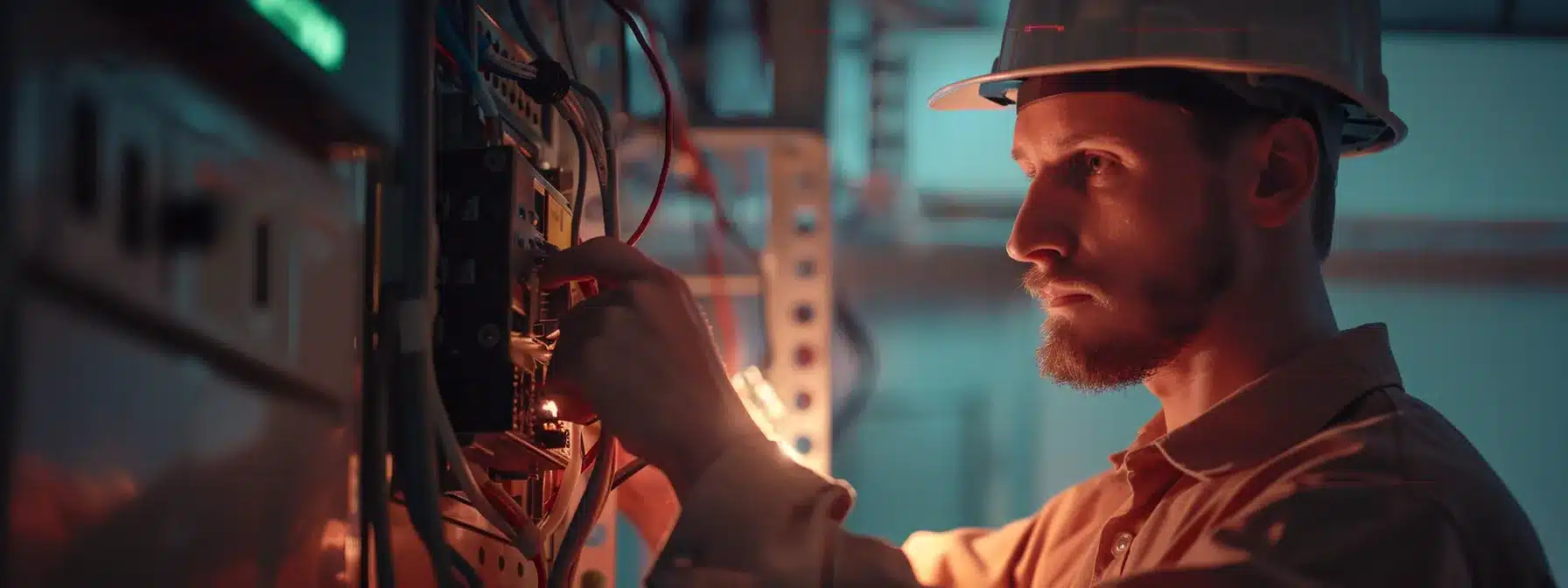
Emergency wiring inspections demand a meticulous approach from skilled electricians to ensure the safety and reliability of these critical systems. The process involves careful preparation, thorough on-site examinations, and detailed post-inspection reporting. Inspectors assess energy efficiency, system redundancy, and accessibility of components like junction boxes. These comprehensive checks help maintain the integrity of emergency electrical systems, identifying potential issues before they compromise safety. By following a structured inspection process, electricians can effectively evaluate and maintain these vital systems, ensuring they’re ready to perform when needed most.
Pre-Inspection Preparations and Checklists
Electricians begin pre-inspection preparations by reviewing the emergency system’s layout and previous maintenance records. They gather necessary tools and personal protective equipment for a thorough examination of the emergency electrical services. These preparations ensure inspectors can efficiently navigate the facility and identify potential issues.
A comprehensive checklist guides technicians through the inspection process, covering all critical components of the emergency wiring system. This list includes items such as backup generators, transfer switches, and emergency lighting fixtures. Inspectors also verify compliance with local jurisdiction requirements, ensuring the system meets all applicable codes and standards.
Before starting the on-site inspection, electricians coordinate with facility managers to minimize disruptions to normal operations. They schedule access to restricted areas and arrange for necessary equipment shutdowns. This careful planning allows for a thorough examination of the emergency electrical infrastructure while maintaining building safety and functionality.
On-Site Procedures for a Thorough Examination
Technicians begin on-site procedures by visually inspecting the emergency wiring system’s components. They examine cables, connectors, and junction boxes for signs of wear, damage, or corrosion. This initial assessment helps identify obvious issues that require immediate attention.
After the visual inspection, electricians use specialized testing equipment to evaluate the system’s performance. They measure voltage levels, check for proper grounding, and test the functionality of circuit breakers and switches. These tests ensure the emergency wiring system can handle the required load during critical situations.
The final step involves simulating emergency scenarios to verify the system’s response. Technicians trigger power outages and monitor how quickly backup generators engage and emergency lighting activates. This hands-on testing confirms that all components work together seamlessly to maintain essential services during crises.
Post-Inspection Reports and Action Steps
After completing the on-site inspection, electricians compile detailed post-inspection reports. These documents outline their findings, highlighting any issues discovered during the examination. The reports serve as crucial records for facility managers and regulatory bodies.
Based on the inspection results, technicians develop action steps to address identified problems. They prioritize issues based on their severity and potential impact on emergency system performance. This prioritization helps facility managers allocate resources effectively for necessary repairs or upgrades.
The post-inspection process often includes a debriefing session with facility staff to discuss findings and recommendations. Electricians explain the importance of addressing critical issues promptly and outline long-term maintenance strategies. This collaborative approach ensures all parties understand the emergency wiring system’s current state and future needs:
- Review inspection findings with facility management
- Prioritize necessary repairs or upgrades
- Develop a timeline for implementing recommended actions
- Schedule follow-up inspections to verify improvements
- Update emergency response plans based on inspection results
Ignoring emergency wiring inspections can lead to disastrous consequences. Let’s explore the potential fallout of neglecting these crucial checks.
Impact of Neglected Emergency Wiring System Checks
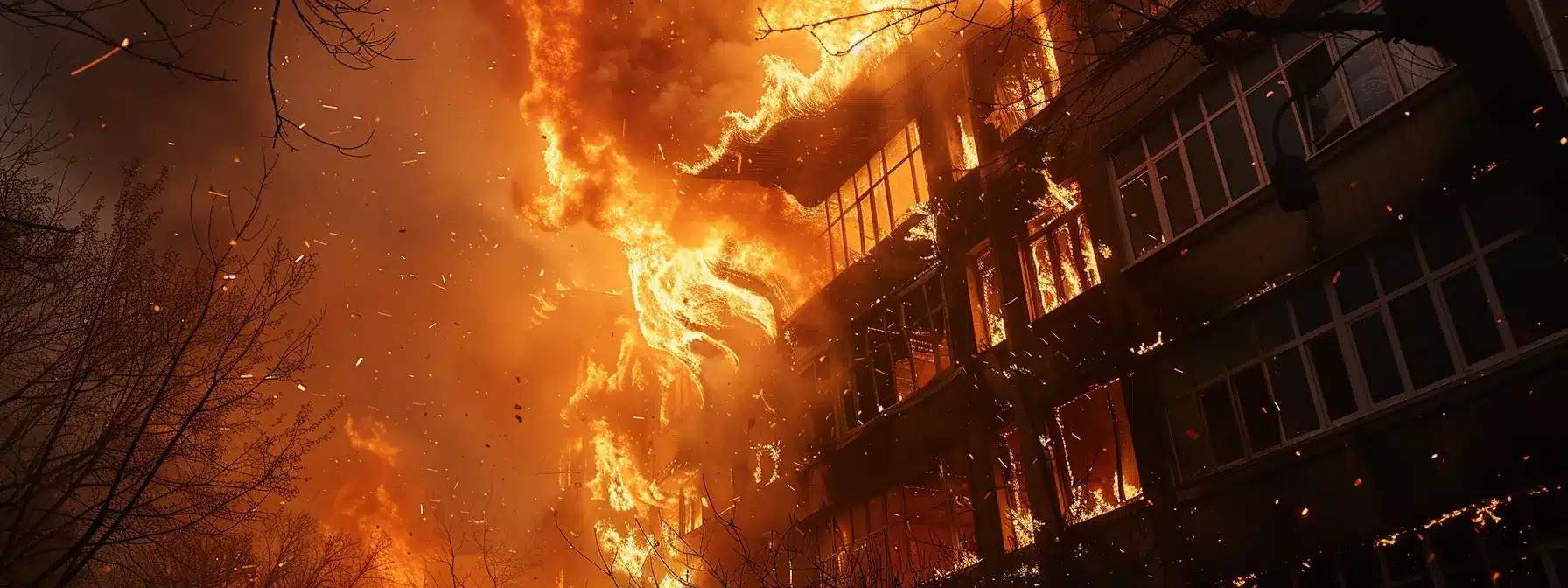
Neglecting regular checks on emergency wiring systems can lead to severe consequences, jeopardizing safety and incurring substantial costs. Outdated or faulty wiring poses significant risks, potentially causing electrical fires or system failures during critical moments. Real-world incidents have demonstrated the devastating effects of inadequate maintenance, resulting in property damage, injuries, and even loss of life. Beyond the immediate dangers, building owners and managers face legal and financial repercussions for negligence in maintaining these essential systems. Understanding these impacts underscores the importance of prioritizing regular inspections and maintenance of emergency wiring infrastructure.
Risks Associated With Outdated or Faulty Wiring
Outdated or faulty wiring in emergency systems poses significant risks to both property and lives. These systems may fail to activate during critical situations, leaving buildings without essential power or lighting. Faulty wiring can also lead to electrical fires, potentially exacerbating emergency situations rather than mitigating them.
Aging wiring insulation deteriorates over time, increasing the likelihood of short circuits and electrical shocks. This deterioration can compromise the integrity of the entire emergency system, rendering it unreliable when needed most. Outdated wiring may also struggle to handle modern electrical loads, leading to overheating and equipment failure.
Neglected emergency wiring systems often develop hidden issues that go unnoticed until a crisis occurs. Corrosion at connection points, loose terminals, and damaged conduits can cause intermittent failures or sudden breakdowns during emergencies. These hidden problems underscore the importance of regular inspections to identify and address potential hazards before they escalate into dangerous situations.
Real-Life Incidents Caused by Inadequate Maintenance
A hospital in Florida experienced a catastrophic failure of its emergency power system during a hurricane due to inadequate maintenance. The backup generators failed to start, leaving critical medical equipment without power for hours. This incident resulted in the evacuation of patients and highlighted the dire consequences of neglecting emergency wiring system checks.
A high-rise office building in New York City faced a dangerous situation when its emergency lighting system malfunctioned during a power outage. Years of neglected maintenance led to corroded battery connections and faulty circuitry. Occupants struggled to evacuate safely in the darkness, resulting in several injuries and a subsequent lawsuit against the building management.
A manufacturing plant in Texas suffered significant financial losses when its emergency shutdown system failed during a chemical leak. Investigators found that routine maintenance had been skipped for years, leading to degraded wiring and faulty sensors. The incident resulted in a prolonged production stoppage and hefty fines from regulatory agencies.
Legal and Financial Repercussions for Negligence
Neglecting emergency wiring system checks can lead to severe legal consequences for building owners and managers. Courts often view such neglect as a breach of duty to ensure occupant safety, resulting in hefty fines and penalties. In some cases, negligent parties face criminal charges, especially if injuries or fatalities occur due to system failures.
Financial repercussions extend beyond legal fees and fines. Insurance companies may deny claims related to incidents caused by inadequate maintenance, leaving property owners to bear the full cost of damages. Additionally, businesses can suffer significant losses due to downtime and reputational damage following emergency system failures.
Regulatory bodies often impose stricter oversight and compliance requirements on organizations found negligent in maintaining emergency wiring systems. This increased scrutiny can result in more frequent inspections, mandatory system upgrades, and ongoing reporting obligations, all of which incur substantial costs and administrative burdens.
Don’t let neglected emergency wiring put your safety at risk. Discover simple steps to keep your system in top shape and protect what matters most.
Tips for Maintaining Your Emergency Wiring System
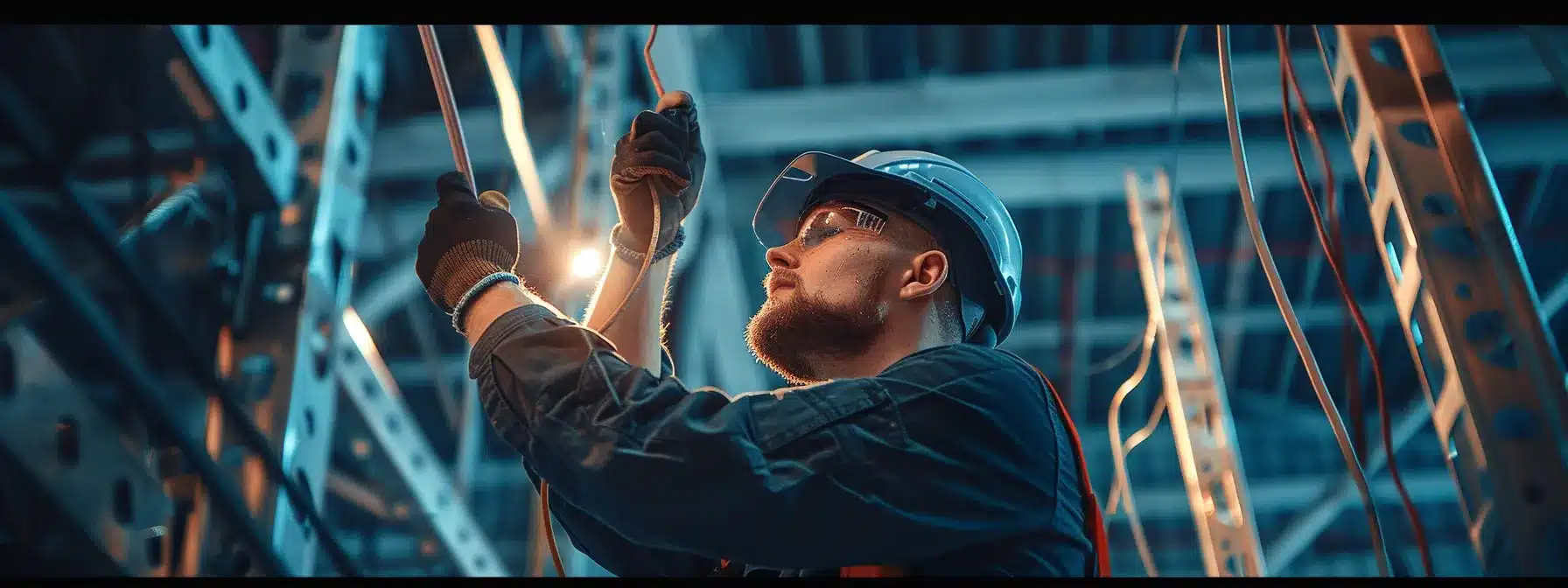
Maintaining emergency wiring systems requires a proactive approach to ensure their reliability during critical situations. Regular professional evaluations form the cornerstone of a robust maintenance strategy, complemented by routine in-house checkups. Implementing a consistent inspection schedule helps identify potential issues before they escalate into serious problems. Equally important is the meticulous documentation of all inspections and maintenance work, creating a comprehensive record that aids in future assessments and demonstrates compliance with safety regulations. By following these guidelines, building owners and managers can significantly enhance the longevity and effectiveness of their emergency electrical infrastructure.
Scheduling Regular Professional Evaluations
Building owners should schedule professional evaluations of their emergency wiring systems at least annually. These inspections ensure compliance with safety standards and identify potential issues before they become critical. Certified electricians possess the expertise to thoroughly assess the system’s components and performance.
Timing these evaluations strategically can minimize disruptions to daily operations. Many facilities opt for inspections during off-peak hours or planned maintenance periods. This approach allows for comprehensive testing without impacting normal business activities.
Customizing the frequency of professional evaluations based on the facility’s specific needs enhances system reliability. High-risk environments or older buildings may benefit from more frequent inspections, possibly every six months. Tailoring the inspection schedule to the unique characteristics of each property ensures optimal maintenance of emergency wiring systems.
Implementing a Routine Checkup Strategy
Facility managers can implement a routine checkup strategy by creating a monthly inspection schedule for emergency wiring systems. This approach allows staff to familiarize themselves with the system’s components and identify any visible issues. Regular visual inspections help catch early signs of wear or damage, prompting timely interventions.
Training maintenance personnel to perform basic tests on emergency lighting and alarms enhances the effectiveness of routine checkups. Staff can conduct simple functionality checks, ensuring backup batteries are charged and emergency lights activate when needed. These regular assessments complement professional evaluations, providing ongoing monitoring between more comprehensive inspections.
Incorporating emergency wiring system checks into broader facility maintenance routines ensures consistent attention to these critical components. Managers can create checklists that guide staff through key inspection points, such as examining wiring connections and verifying the cleanliness of electrical panels. This systematic approach helps maintain the reliability of emergency systems while fostering a culture of safety awareness among facility personnel.
Keeping Records of Inspections and Maintenance Work
Maintaining detailed records of inspections and maintenance work on emergency wiring systems proves essential for long-term system reliability. Facility managers should create a comprehensive log that includes dates of inspections, specific components checked, and any issues identified. This documentation serves as a valuable resource for tracking the system’s history and identifying recurring problems.
Digital record-keeping systems offer advantages for organizing and accessing maintenance data. Cloud-based platforms allow multiple users to update and review records, ensuring all relevant personnel stay informed about the emergency wiring system’s status. These digital tools also facilitate easy retrieval of information during audits or emergency situations.
Photographs and diagrams enhance the value of maintenance records by providing visual documentation of the system’s condition over time. Including images of repaired components or upgraded installations helps future technicians understand the system’s evolution. This visual history proves particularly useful when troubleshooting complex issues or planning major upgrades to the emergency wiring infrastructure.

